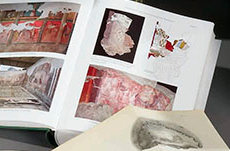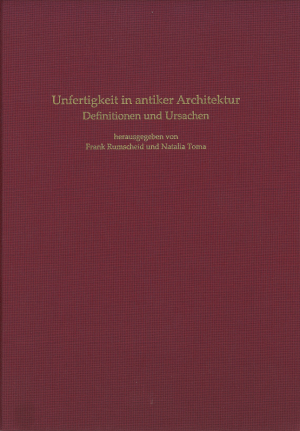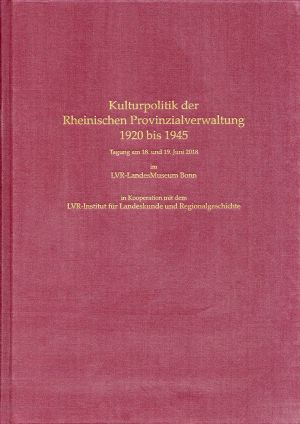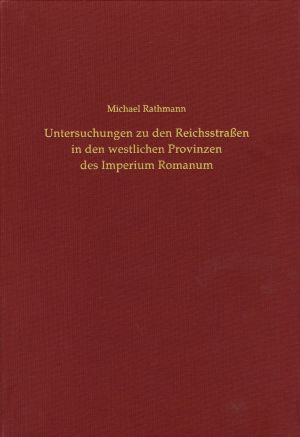Beihefte der Bonner Jahrbücher
Die Buchreihe steht für die Interessensgebiete der universitären historischen und archäologischen Forschung in der klassischen Altertumswissenschaft einerseits und die musealen Interessen des Bonner Landesmuseums andererseits. Ein Schwerpunktthema ist die Archäologie und Militärgeschichte des Rheinlandes, und auch klassisch-archäologische Themen finden hier Platz. Neben umfassenden Abhandlungen und Qualifikationsarbeiten sind auch Sammelbände, Festschriften und Kongressberichte erschienen. Vergriffene Bände werden durch die Herausgeber in lockerer Folge als Digitalisate eingestellt.

Herausgeber
Redaktion Bonner Jahrbücher
LVR – Landesmuseum Bonn
Verein von Altertumsfreunden im Rheinlande (Bonn)
Bachstraße 9
53115 Bonn
Dr. Olaf Dräger
E-Mail: Olaf.Draeger@lvr.de
Bisher erschienen
Unfertigkeit in antiker Architektur: Definitionen und Ursachen. Beiträge einer Sektion des Neunzehnten Internationalen Kongresses für Klassische Archäologie in Köln und Bonn am 23. Mai 2018
Fast kein Bau der griechisch-römischen Antike ist frei von Unfertigkeiten, die in Art und Ausmaß jedoch höchst unterschiedlich ausfallen. Was aber wurde in der Antike als unfertig wahrgenommen? Welche Gründe hatten ungeplante Unfertigkeiten? Was wurde toleriert oder sogar mit der Zeit zur gewollten Kunstform?
Nach einer systematischen Einführung ins Thema behandeln sieben Beiträge übergreifend Buckelbossen und polygonale Säulen, dann einige Fallbeispiele in Kleinasien – insbesondere das frühhellenistische Mausoleum von Belevi, das spätrömische Stadion-Osttor in Milet und mehrere kaiserzeitliche Bauten in Ephesos –, sowie schließlich den riesigen severischen Baukomplex in Leptis Magna (Nordafrika).
Kulturpolitik der Rheinischen Provinzialverwaltung 1920 bis 1945: Tagung am 18. und 19. Juni 2018 im LVR-LandesMuseum Bonn
Der Landschaftsverband Rheinland (LVR) stellt sich seiner Geschichte – mit Blick auf die NS-Vergangenheit heißt das: Der LVR als Nachfolger des Rheinischen Provinzialverbandes stellt bohrende Fragen an die eigene Vergangenheit, wie sie frühere Generationen nicht hören wollten. Das Kulturdezernat des LVR besetzt dabei starke Forschungspositionen: Die Tagung “Archäologie und Bodendenkmalpflege in der Rheinprovinz 1920–1945“ schaute 2012 auf die Archäologie als kulturelle Größe und Legitimationswissenschaft. Ein Ergebnis: Der Provinzialverband stand bei der Durchsetzung der kulturpolitischen Ziele des Regimes nicht am Rande. Das LVR - Landesmuseum Bonn betreibt gleichzeitig Provenienzforschung zu seiner Sammlung. Es bot zudem 2018 das Forum für eine Tagung, denn es stellten sich drängende Fragen: Wie setzte sich die Kulturpolitik des NS-Staates in der Rheinprovinz durch? Wo schuf oder bewahrte der Maßnahmenstaat des Dritten Reiches auf der provinzialen Ebene Strukturen, wo blockierten Netzwerke und Karrieren einander? Die Ergebnisse der Forschungen stehen als Tagungsbeiträge zur Verfügung.
Untersuchungen zu den Reichsstraßen in den westlichen Provinzen des Imperium Romanum
Die Studie legt den Fokus auf die Reichsstraßen in den Provinzen des Imperium Romanum, ihre Definition, Administration und Finanzierung. Auf italischem Boden wird eine Via publica durch Rechtsnormen definiert, für überregionale Straßen in den Provinzen sind wir hingegen auf Meilensteine entlang der Strecke, die Erwähnung der Verbindung in den Itineraren sowie ihre Darstellung auf der Tabula Peutingeriana angewiesen. Die Administration erfolgt in Italien durch Straßenkuratoren, in den Provinzen primär durch die Städte, punktuell von den Statthaltern unterstützt; kaiserliche Eingriffe sind selten. Folglich obliegen auch die Finanzierung und der Unterhalt den Städten an der Strecke.
Rezensionen: Gerion 22, 2004, S. 554f.; sehepunkte 5, 2005, Nr. 9; Gymnasium 112, 2005, S. 570f.; Museum Helveticum 62, 2005, S. 257; Historische Zeitschrift 282, 2006, S. 174f.; Latomus 65, 2006, S. 1072f.; Klio 89, 2007, 237f.; Anzeiger für die Altertumswissenschaft 62, 2009, S. 72-74; Gnomon 85, 2013, S. 342-347
Die römischen Gläser aus Bonn
Dieser Bestandskatalog der römischen Gläser im damaligen Rheinischen Landesmuseum Bonn (heute LVR-Landesmuseum) erfasst alle bis 1988 im Stadtgebiet von Bonn gefundenen römischen Glasgefäße und Gefäßbruchstücke, die sich ihrer Form nach identifizieren lassen.










